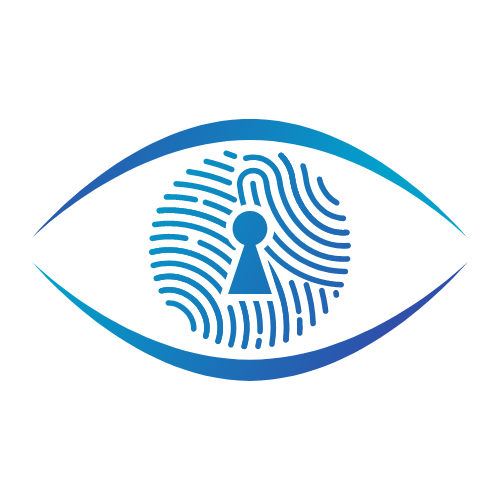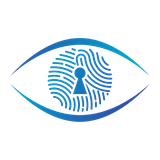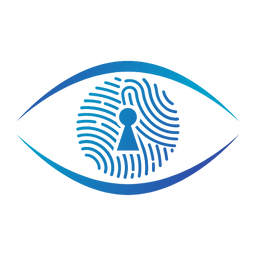Data Protection Officers and AI: Navigating Privacy in the Age of Machine Learning

The convergence of artificial intelligence and data protection has created one of the most pressing compliance challenges of our time. As AI systems become integral to business operations, Data Protection Officers find themselves at the intersection of innovation and privacy rights, tasked with ensuring that the promise of AI doesn't come at the expense of individual privacy.
The landscape for DPOs has fundamentally shifted. Where once their focus was primarily on traditional data processing activities, today's DPOs must grapple with complex AI systems that process personal data on unprecedented scales, often in ways that challenge conventional privacy frameworks.
The Scale of the Challenge
Artificial intelligence and machine learning technologies are growing rapidly and exponentially, and although they do not always process personal data, when they do, it is often on a vast scale and level of complexity. This reality presents DPOs with a dual challenge: they must develop technical expertise in rapidly evolving AI systems while simultaneously ensuring these systems comply with existing and emerging privacy regulations.

DPOs have a twin challenge: they are faced with a steep learning curve, and in a dynamic area of technology that is evolving daily before their eyes. The exponential growth of AI adoption means that DPOs can no longer afford to treat AI as a future consideration—it's a present reality requiring immediate attention.
The Regulatory Convergence: GDPR Meets the AI Act
The regulatory environment has become significantly more complex with the introduction of the EU AI Act, which works alongside the GDPR to create a comprehensive framework for AI governance. As such, the EU AI Act and the GDPR are designed to work hand-in-glove, with the latter 'filing the gap' in terms of individual rights for scenarios where AI systems use data relating to living persons.
Key regulatory milestones DPOs must track:
- February 2, 2025: Prohibited AI practices under the AI Act come into effect
- August 2, 2025: Governance rules and obligations for General Purpose AI models become applicable
- August 2, 2026: Full AI Act compliance required for high-risk AI systems
The AI Act classifies AI systems into four levels of risk: unacceptable, high, limited and minimal. DPOs will need to be able to identify the level of risk of AI systems used by their organisation and put in place the corresponding requirements.
Core Privacy Challenges in AI Implementation
Data Minimization in the AI Context
Traditional data minimization principles face new challenges in AI environments. Your AI systems must collect only essential personal data needed for specific purposes, strictly adhering to the principle of data minimization. This targeted approach to data collection helps protect individual privacy while reducing your organization's compliance burden.
However, AI systems often require vast datasets for training, creating tension between the need for comprehensive data and minimization principles. DPOs must work with technical teams to:
- Establish clear data collection boundaries for AI training
- Implement synthetic data generation techniques where possible
- Develop robust data governance frameworks for AI development cycles
The Transparency Paradox
The frequent lack of transparency of AI systems ("black boxes") poses a particular challenge. In order to overcome this and effectively guarantee data subjects' rights, detailed documentation of design decisions, the examination of alternative, more transparent AI approaches ("explainable AI") and close cooperation between data protection and IT officers are essential.
DPOs must balance the technical complexity of AI systems with GDPR's transparency requirements, ensuring that privacy notices adequately explain AI processing while remaining comprehensible to data subjects.
Purpose Limitation and Function Creep
Beyond collection practices, purpose limitation represents another significant hurdle. You need to ensure your AI systems process data only for specified, legitimate purposes as mandated by GDPR. This means implementing technical and organizational measures that prevent function creep—where data collected for one purpose gradually gets used for others without proper authorization.
Practical Compliance Strategies for DPOs
1. Risk Assessment and Impact Assessments
A threshold analysis determines whether there is a high risk and therefore a DPIA is mandatory; the decision must be documented in writing. The AI Regulation and the GDPR complement each other here, whereby high-risk AI systems are also likely to pose a high risk under data protection law according to the AI Regulation.
DPOs should establish clear criteria for when DPIAs are required for AI systems, considering both GDPR and AI Act requirements. This includes:
- Systems involving profiling or automated decision-making
- Processing of sensitive personal data
- Large-scale monitoring activities
- AI systems classified as "high-risk" under the AI Act

2. Leveraging AI as a Compliance Tool
Interestingly, AI can also serve as a powerful ally for DPOs. AI can help DPOs to keep up-to-date with the latest developments in data protection law. This is because AI can be used to track changes in legislation and guidance from regulators.
AI applications for DPO workflows include:
- Document Generation: AI can be used to generate initial drafts of documents like privacy policies, data processing agreements, internal data protection policies, and data breach response plans.
- ROPA Automation: AI can help with this by analysing business processes and automatically filling in sections of the ROPA, such as data categories, processing purposes, and data retention periods.
- Risk Assessment: AI can analyze business processes and identify data categories involved. This capability could be extended to identifying potential risk scenarios.
3. Establishing AI Governance Frameworks
DPOs must work collaboratively across departments to establish comprehensive AI governance. With the rise of AI and the emergence of regulations such as the AI Act, the role of DPOs is changing and becoming more strategic than ever. They will be required to work closely with technical, legal and operational teams to integrate data protection and regulatory requirements right from the design and deployment of AI systems.
Managing Data Subject Rights in AI Systems
Even if artificial intelligence is based on complex algorithms, the rights of data subjects under the GDPR remain fully valid. This means that your right to information (Art. 15 GDPR), rectification (Art. 16 GDPR), erasure (Art. 17 GDPR), restriction of processing (Art. 18 GDPR), data portability (Art. 1 20 GDPR) and objection (Art. 21 GDPR) must also be guaranteed in the context of AI applications.
Key considerations for data subject rights:
- Right to Explanation: Both GDPR Article 22 and the AI Act emphasize the importance of meaningful human oversight in automated decision-making
- Data Portability: Complex in AI contexts where personal data may be embedded in trained models
- Erasure Rights: Technical challenges in removing specific data from trained AI models
- Access Rights: Providing meaningful information about AI processing while protecting trade secrets
International Considerations and Cross-Border Challenges
International data flows present particular challenges for AI systems, which often leverage global computing resources and data sources. The invalidation of Privacy Shield and subsequent introduction of the EU-U.S. Data Privacy Framework have complicated cross-border data transfers, requiring organizations to implement additional safeguards when transferring personal data to third countries.
DPOs must navigate an increasingly complex global regulatory landscape, with different jurisdictions developing their own approaches to AI governance while maintaining consistency with existing data protection frameworks.

Building AI Literacy and Expertise
DPOs will need to develop in-depth expertise in the field of AI, covering technical as well as legal and ethical aspects. They will play a key role in raising awareness and training teams, as well as in promoting a culture of data protection and AI.
Essential skills for the modern DPO:
- Understanding of machine learning fundamentals and AI system architectures
- Knowledge of AI-specific privacy-preserving technologies (differential privacy, federated learning)
- Familiarity with AI Act classification systems and compliance requirements
- Ability to assess and communicate AI-related privacy risks to non-technical stakeholders
Future-Proofing Your AI Privacy Strategy
As we move into 2025 and beyond, several trends will shape the DPO's role in AI governance:
Emerging Technologies: New AI capabilities will continue to challenge existing privacy frameworks, requiring adaptive compliance strategies.
Regulatory Evolution: AI privacy concerns have hit record levels, and businesses worldwide are scrambling to understand how AI GDPR will alter their operations in the years ahead.
Industry Standards: The development of AI ethics frameworks and industry best practices will provide additional guidance for DPOs.
Conclusion: Embracing the Strategic Role
The intersection of AI and privacy represents both a challenge and an opportunity for DPOs. Companies and public bodies are moving fast to understand and implement artificial intelligence solutions to achieve all manner of efficiencies and opportunities for revenue growth. The DPO has no choice but to keep pace; technology will not wait.
Success in this evolving landscape requires DPOs to embrace a more strategic, collaborative role—working as partners with technical teams, legal departments, and business stakeholders to ensure that AI innovation proceeds hand-in-hand with privacy protection.
The organizations that will thrive in the AI era are those that recognize privacy protection not as a constraint on innovation, but as a competitive advantage that builds trust and sustainable business practices. DPOs who can navigate this complex landscape will find themselves at the center of their organization's most strategic decisions, helping to shape not just compliance programs, but the ethical foundation of AI-driven business models.
The future of privacy in the age of AI isn't about choosing between innovation and protection—it's about ensuring they advance together, with DPOs serving as the crucial bridge between technological possibility and fundamental rights.









